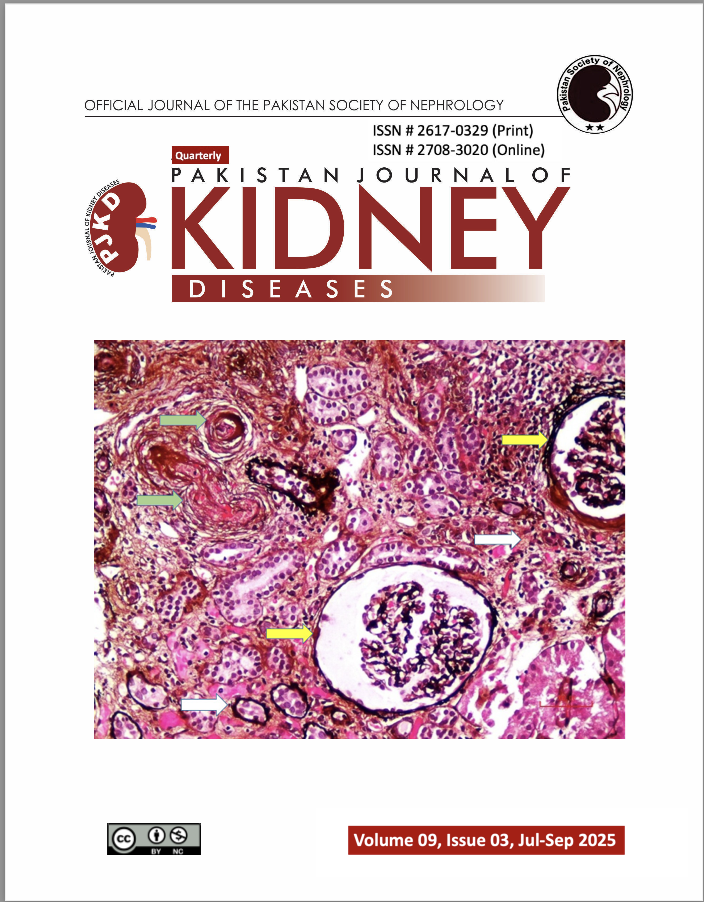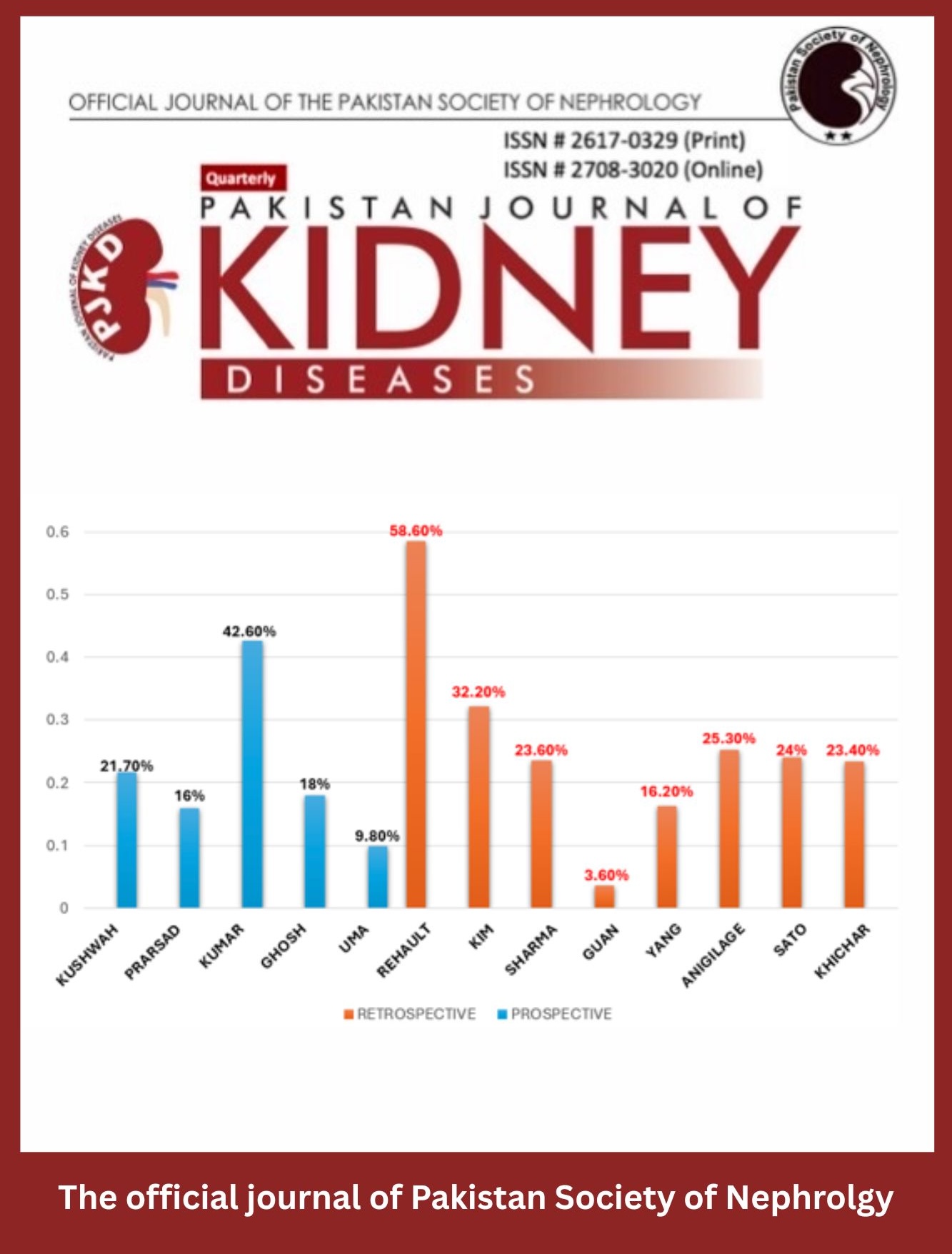Laparoscopic Peritoneal dialysis catheter insertion and its outcome in a cohort of automated peritoneal dialysis patients.
DOI:
https://doi.org/10.53778/pjkd93318Keywords:
peritoneal dialysis, Pakistan, technique survival, omental wrap, catheter malfunction, Laparascopy, flouroscopy, accessAbstract
Background: Reliable peritoneal dialysis (PD) access is critical to technique survival. We describe early outcomes from a single-center series of PD catheter insertions and summarize durations and reinsertion events.
Methods: Consecutive patients undergoing PD catheter placement were analysed. The primary outcome was any catheter reinsertion or documented malfunction. Durations from index insertion to 1 September 2025 were computed. Descriptive statistics were generated.
Results: Among 21 patients (mean age 54.9±18.9 years), laparoscopic placement was used in 21 cases. Reinsertion/malfunction occurred in 4 (19.0%). Mean duration was 260.2±169.6 days; median 235 (range 10-601). Duration categories: ≤30 days: 2 (9.5%), 31–90 days: 2 (9.5%), 91–180 days: 2 (9.5%), >180 days: 15 (71.4%).
Conclusions: Laparoscopically placed PD catheter resulted in an overall successful maintenance of PD catheter short term and long term. Further long term studies are needed for a local experience in PD catheter placement laparoscopically and a comparative analysis with other techniques.
Downloads
Published
How to Cite
Issue
Section
License
Copyright (c) 2025 Pakistan Journal of Kidney Diseases

This work is licensed under a Creative Commons Attribution-NonCommercial 4.0 International License.



